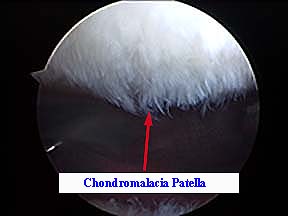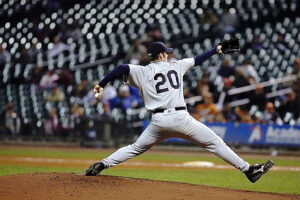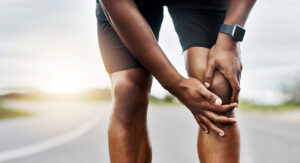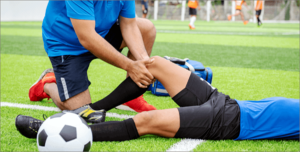Sudden running episodes, repetitive squatting, jumping, or prolonged dancing may increase the stress on knees and lead to runner’s knee. Here’s what and how the condition can be treated:
Knee pain is one of the most common complaints. It can occur due to various causes and at any age— from early childhood to adulthood. The reason for knee pain varies in each age group. There can be multiple factors leading to pain. Knee is one of the large joints, which undergoes a lot of stress due to strenuous activities. Knee joint is formed by three bones, the femur, the tibia and the patella. The three bones form three joints—the tibia femoral joint, which is medial; the lateral tibio femoral joint and thepatella femoral joint.
The joints are formed by multiple ligaments and cartilage. The ligaments hold both tibia and femur together whereas the cartilage covers the distal end of the femur and tibia. The cartilage acts as a shock absorber in the knee joint. The cartilage prevents the nerve endings of the femur and tibia to get exposed and therefore reduces the chance of occurrence of knee pain. The cartilage also covers the articular surface of the patella.
Decoding chondromalacia patellae
Chondromalacia patellae, also known as ‘runner’s knee,’ is a condition, where the soft cartilage on the undersurface of the patella softens and gets damaged eventually. This condition is common among all age groups, when the knee is used abruptly for sudden running episodes, repetitive squatting, jumping, or prolonged dancing. It may also occur in older adults, indicating the early signs of arthritis of the knee.
In players, Chondromalacia is often detected due to overuse injury. Sometimes, taking rest from the training can yield good results. In other cases, improper alignment of the lower limbs and the knee can be the cause and it takes long time to get healed completely.
The symptoms of runner’s knee are knee pain, occasional burning and pricking, locking and grinding sensations. The patient experiences difficulty or pain while getting up after being in a sitting position for a long time. The patient may also feel pain during climbing and climbing down the stairs. The pain increases on running or while using the trade-mill.


Causes of chondromalacia patellae
The patella resides over the front of your knee joint, predominately the femur bone. When we bend our knee, the cartilaginous surface of the patella glides over the cartilage of femur (trochlear surface). The patella has two poles and two sides, the superior pole bears the attachment and loads of thigh or quadriceps muscles, whereas the inferior pole bears the attachment of the patella tendon. The patella tendon connects the patella with the tibial tuberosity of the tibia. An improper functioning or weakness of the quadriceps can cause the patella to rub on the cartilaginous surface of the femur. This repetitive friction among the cartilaginous surface of both the bones lead to deterioration of the cartilage in the patella, resulting in chondromalacia patellae, or runner’s knee.
Improper Patella movement may result from repeated stress on the knee joints due to running, skiing, or jumping, among other activities. It may also occur due to congenital or developmental poor alignment of lower limbs; weakness of hamstrings and quadriceps muscles; muscle imbalance between the adductors and abductors (the muscles on the outside and inside of your thighs) or a direct blow to the kneecap.
Risk of chondromalacia patellae
A variety of factors may increase the risk for developing chondromalacia patellae. Adolescent and young adults are vulnerable. During growth spurts, the muscles and bones develop rapidly, which may contribute to short-term muscle imbalances. Females are also more prone than males to develop runner’s knee due to less muscle mass than males, which causes abnormal knee positioning, as well as more lateral (side) pressure is exerted on the kneecap.
People having flat feet are also at risk as they may place more stress on the knee joints than those having higher arches would. Any prior injury to the patella can increase the risk of developing runner’s knee. It occurs due to the improper healing of the cartilage. Any high activity level or engagement in frequent exercises put pressure on the knee joints.
Runner’s knee can also be a symptom of early arthritis, a condition causing inflammation to the joint and tissue. Inflammation can prevent the kneecap from functioning properly.
Symptoms
People mostly complain of sudden onset or nagging type of pain around the knee. A weird sensation continuously bothers the knee while sitting, sleeping or walking. Chondromalacia patellae pain will be typically present in the knee region, known as patellofemoral pain. The patient complains of occasional burning, pricking, locking and grinding sensations.
What signs to look for while diagnosing?
- Swelling around the knee.
- Retro patella tenderness is also present.
- Passive knee friction rub can also cause pain. There can be mild tenderness on the inferior pole of patella too.
- X-rays won’t be helpful in early stages and are mostly helpful in later stages. It helps us to show bone damage or signs of misalignment or arthritis
- Magnetic resonance imaging (MRI) is the best choice as it helps to view cartilage wear and tear.
- Blood tests: CBC, ESR, S Uric Acid
Treatment options
- The goal of treatment is to reduce the pressure on the patella or the knee joint.
- Resting and icing (2-3 times) of the joint is highly recommended.
- The cartilage damage resulting in runner’s knee can often repair itself with rest.
- Physical therapy: Physical therapy focusing on strengthening the quadriceps, hamstrings, adductors, and abductors can help improve your muscle strength and balance. Muscle balance will help prevent knee misalignment. Non-weight-bearing exercises, such as swimming or riding a stationary bike, are recommended. Additionally, isometric exercises that involve tightening and releasing of the muscles can help maintain muscle mass.
- Avoid running, or using the trade-mill, squatting or any strenuous exercises.
- Surgery is recommended for rare instances, especially when the patient gets no relief after post rehabilitation for 6 months or more. A key-hole Arthroscopic surgery may be necessary to examine the joint and determine whether there is misalignment of the knee. This operation involves cutting some of the ligaments to release tension and allow for more movement.
- Other surgical options may involve smoothing the back of the kneecap, implanting a cartilage graft, or relocating the insertion of the thigh muscle.
Precautionary measures
- Avoid repeated stress on the kneecaps. Wear kneepads if you have to spend time on your knees.
- Create muscle balance by strengthening your quadriceps, hamstrings, abductors, and adductors.
- Wear shoe inserts that correct flat feet by increasing your arch. This will decrease the amount of pressure placed on your knees and may realign the kneecap.
- Finally, excessive body weight may stress your knees. Maintaining a healthy body weight can help take pressure off the knees and other joints.




